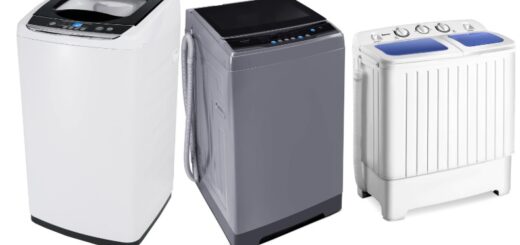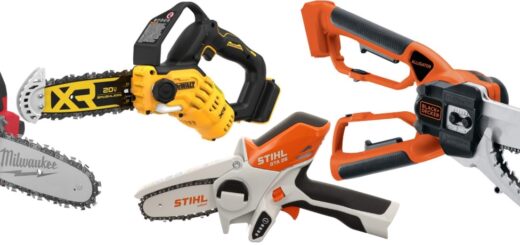The Complete Buyer’s Guide to Portable Power Stations
Based on our comprehensive research and a detailed analysis of technical specifications, we’ve distilled everything you need to know into one comprehensive guide. We’ve sifted through the marketing claims to present clear, data-driven recommendations, helping you invest confidently in a power station that perfectly matches your needs.
Finding Your Match: Top Picks for Every Lifestyle
The “best” power station is the one that fits your life. Here are our top recommendations, tailored to how you’ll be using your power.
For Weekend Warriors and Car Campers
You need a blend of portability and power—enough to run a cooler and charge your gadgets for a few days without weighing you down.
- EcoFlow River 3: A budget-friendly marvel, this ultra-compact unit stands out for its incredible one-hour recharge time, a feature usually found on much pricier models. It’s perfect for keeping phones, speakers, and lights powered up.
- Anker 521: This is the definition of “best bang for your buck.” It’s a reliable, no-frills workhorse with a durable build and a long-lasting LiFePO4 battery, making it a trustworthy choice for basic charging needs.
- Jackery Explorer 300 Plus: Exceptionally lightweight with a clever design, this model is easy to toss in a backpack. It offers fast charging and smart app control, making it a convenient companion for any short adventure.
For RV Life and Off-Grid Expeditions
Here, power is not a luxury; it’s a necessity. You need higher capacity, strong output for appliances, and, most importantly, excellent solar charging to refuel every day.
- Anker Solix C1000: This unit punches well above its weight, offering the power of a larger station in a surprisingly compact and manageable frame. Its 1800-watt output can handle demanding appliances and tools with ease.
- EcoFlow Delta 3 Plus: Often named “Best Overall,” this model is the Swiss Army knife of power stations. It combines blazing-fast wall and solar charging with a powerful inverter and a professional-grade backup function, making it ready for anything.
- Jackery Explorer 1000 v2: If you have to carry your power station often, this is your champion. It’s noticeably lighter than its direct competitors without sacrificing capacity, making it the top choice for those who prioritize portability.
- Anker Solix F3800: For the serious RVer, this is the ultimate solution. It features built-in RV plugs, allowing it to connect directly to your vehicle’s shore power inlet and run everything inside just like a full-service campsite.
For Peace of Mind at Home
When the power goes out, you need a reliable lifeline. The priorities are maximum power to run essentials like the refrigerator, and the ability to expand capacity for longer outages.
- Jackery Explorer 2000 Plus: A true powerhouse, this model is often cited as the best choice for its immense power and incredible scalability. You can connect extra batteries to create a system large enough to power a home’s essentials for up to two weeks.
- Anker Solix F3800: This unit is in a class of its own for home backup. Its unique ability to output 240 volts means it can power large appliances like a central air conditioner or a clothes dryer—a task that requires two units from most competitors.
- EcoFlow Delta Pro: A heavy-duty beast with a massive surge rating, making it the perfect choice for homes with demanding appliances like a well pump that require a huge burst of power to start.
The Contenders: At a Glance
Here’s a quick look at how some of our top picks stack up.
| Model | Best For | Capacity (Wh) | Output (W) | Weight (lbs) | Key Feature |
|---|---|---|---|---|---|
| EcoFlow River 3 | Budget / Portability | 245 | 300 | 7.8 | 1-hour fast charging |
| Jackery Explorer 1000 v2 | Portability & Power | 1070 | 1500 | 23.8 | Excellent power-to-weight ratio |
| EcoFlow Delta 3 Plus | All-Around Use | 1024 | 1800 | 27.6 | Fastest charging & true UPS |
| Jackery Explorer 2000 Plus | Serious Home Backup | 2043 | 3000 | 61.5 | Massively expandable capacity |
| Anker Solix F3800 | Whole-Home / RV Power | 3840 | 6000 | 132.3 | Integrated 240V output |
Before You Buy: Know Your Power Needs
The journey to finding the right power station begins with a simple question: What do you need to power? The answer will be different for everyone. Before you even look at a single model, grab a pen and paper and list the devices you can’t live without.
- For the Digital Nomad or Camper: Think smartphones, laptops, cameras, drones, portable refrigerators, and maybe some string lights for ambiance.
- For the Homeowner: During an outage, the essentials come first. This could be a full-size refrigerator, a CPAP machine, the Wi-Fi router, or a sump pump.
- For the DIY Enthusiast: If you’re working on a project far from an outlet, your list might include drills, saws, and other power tools.
Next to each item, jot down its required wattage (W), which is usually found on a small label on the device or its power cord. Add up the wattage for everything you might need to run at the same time. This number is your starting point.
It’s a good rule of thumb to add about 20% as a buffer, as some appliances need an extra jolt of power just to start up.
Decoding the Jargon: What the Numbers Really Mean
Once you know what you need to run, you can start to make sense of the specifications on the box. Don’t be intimidated by the technical terms; they boil down to a few key concepts that define what a power station can do for you.
Capacity (Watt-Hours): The Size of Your Tank
Measured in watt-hours (Wh), capacity is the single most important number. It tells you how much energy the battery can store—think of it as the size of the gas tank. A 1000Wh unit can, in theory, power a 100-watt light bulb for 10 hours. Keep in mind that you’ll only get about 85% of the advertised capacity, as the unit uses some energy to power itself. This “usable capacity” is the number that matters for real-world planning.
Power Output (Watts): The Force of the Flow
If capacity is the size of the tank, output is the horsepower. Measured in watts (W), this tells you how much power the station can deliver at once. The total wattage of everything you plug in can’t exceed this number. You’ll often see two output ratings:
- Continuous Power: The steady power the unit can provide over time.
- Surge Power: A short, powerful burst needed to start up appliances with motors, like refrigerators or blenders. A high surge rating is a sign of a versatile and robust power station.
Battery Type: The New Gold Standard
This is a big one. The best modern power stations all use the same battery chemistry: Lithium Iron Phosphate (LiFePO4). This isn’t just a minor upgrade; it’s a revolutionary leap in safety and longevity.
Older lithium-ion batteries might last for 500 charge cycles, but a LiFePO4 battery can be charged and discharged over 3,000 times. That’s the difference between a gadget that lasts a couple of years and a durable appliance that can serve you for a decade or more. They are also inherently safer and less prone to overheating. When you’re shopping, consider a LiFePO4 battery a must-have feature. A long warranty—five years is now a common standard—is a great sign that the manufacturer stands behind its battery tech.
Recharging: Getting Back to Full
A power station is only as good as its ability to get back to 100%. You’ll have a few options:
- Wall Outlet: The fastest method. Many of the latest models can go from empty to full in about an hour—a game-changer when you need to power up quickly before a storm or a trip.
- Solar Panels: Your key to true energy independence. For off-grid use, look at the “Max Solar Input” rating. A higher number means faster charging from the sun, which can be more important than the battery size itself on a multi-day trip.
- Car Outlet: A slower but handy option for topping off your battery while on the road.
The Final Word: Your Investment in Energy Freedom
Choosing the right portable power station is about matching the technology to your lifestyle. By understanding the fundamentals of capacity, output, and battery chemistry, you can confidently select a device that will serve you reliably for years to come. Whether you’re seeking a small companion for weekend trips or a robust system to safeguard your home, today’s market offers a durable, safe, and powerful solution for every need. Make a realistic assessment of what you want to power, and invest wisely in your own energy independence.











